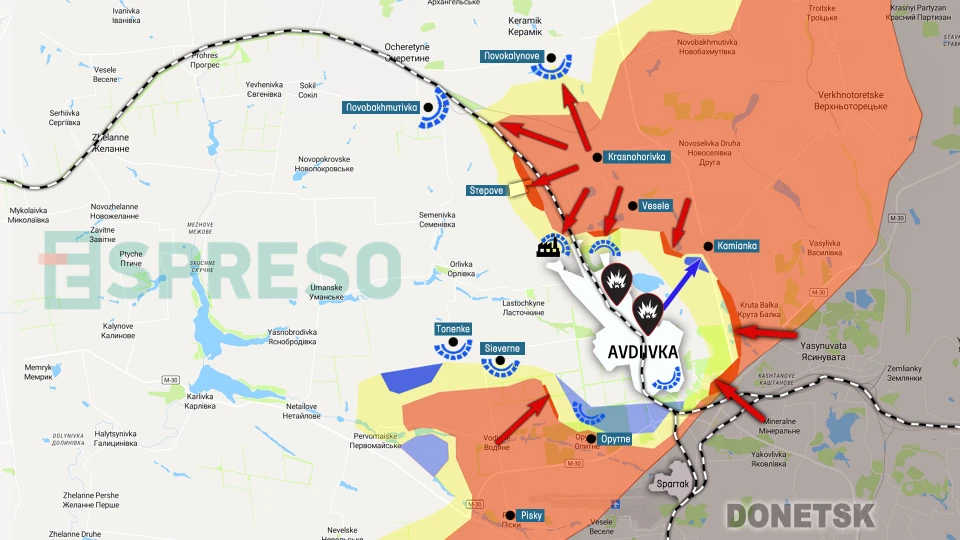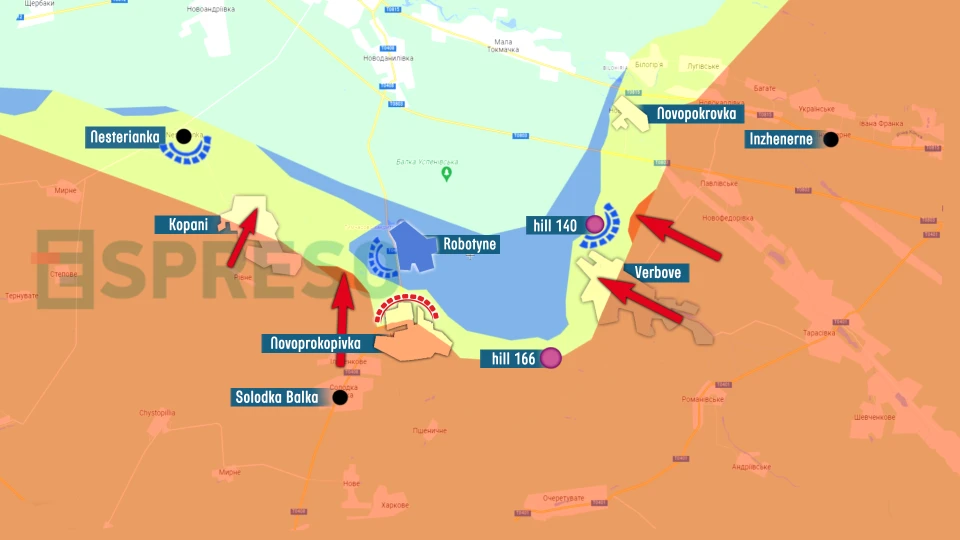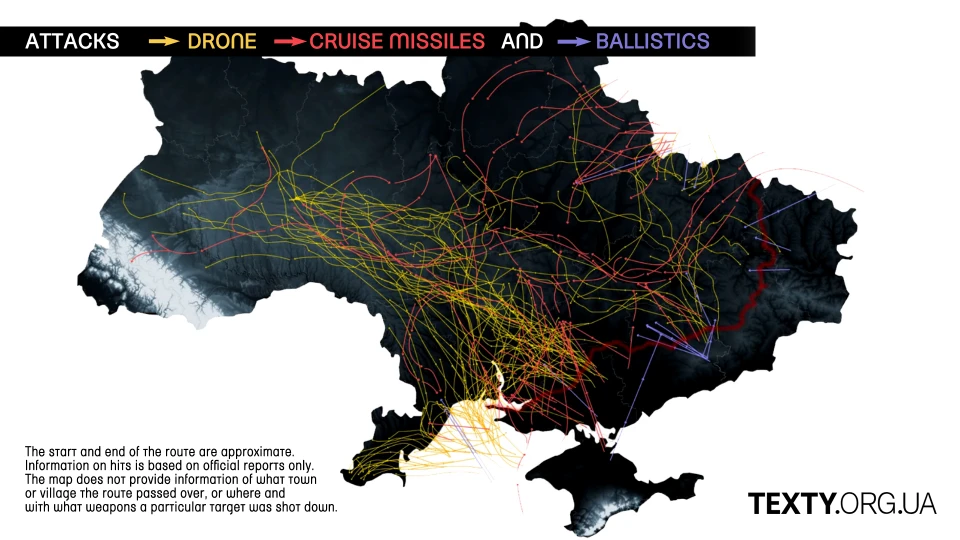
Russia tries to use same tactics near Avdiivka as it did near Bakhmut - military expert Zgurets
The Russian troops are trying to push through the Ukrainian defense and use the same tactics near Avdiivka as they did near Bakhmut. Intense fighting continues, Russia is redeploying its forces
Situation around Avdiivka
The invading Russian army is trying to surround the Ukrainian garrison in Avdiivka from the north and south. But this week there were no fundamental changes on the front line. Although the Russian troops were pushing towards Stepove, there were counterattacks by the Ukrainian Armed Forces. In particular, the 47th Separate Mechanized Brigade again repelled the Russian enemy behind the railroad, who tried to press on Avdiivka from the south and move further beyond the industrial zone, but in vain.

The entire perimeter of the Russian arc around Avdiivka is subject to extremely active fighting. The number of clashes is over 30 per day. The resilience of the units holding this section of the frontline will determine its fate. The supply line is now operational, although Russia is trying to attack it with FPV drones through Orlivka.
There have been no changes in Russia's advance around Avdiivka, but extremely intense fighting continues, with Russia's forces being redeployed, armored vehicles, aircraft and manpower being used.
This week was extremely difficult for the Ukrainian Armed Forces. Ukraine has an 850 km frontline that has become smaller. But in fact, there are sections of the frontline that are the most active in terms of the number of combat clashes. In the last four days, the number of combat engagements per day was 89-101. Out of these 90 clashes, two-thirds took place in Bakhmut, Avdiivka and Marinka. That is, this is the main area of contact with the Russian troops.
Cutting down of ledges in the Zaporizhzhia region
Probably, for now, talks about cutting the ledges are theoretical. After all, in the Robotyne area, where the main direction of Ukraine's advance was, a so-called pocket - 11 km wide and 10 km deep - of territory that is still held by Russia.
Indeed, Russia can theoretically strengthen the flanks to ensure the driving out of Ukraine's forces that have advanced into its defense. However, this week there were counter-attacks on this section of the frontline west of Robotyne and west of Verbove. The dynamics there have slowed down in terms of bad weather, but the fighting continues.

The accumulation of Russian forces is sufficient, but there are no flanking attacks. If a significant number of Russian forces accumulate in one place, Ukraine will use artillery, and this will only lead to increased Russia's losses. Therefore, the preparation of such flanking operations for Russia is a task that still needs to be well prepared, taking into account all the consequences of the new realities.Therefore, I do not think there will be changes in favor of the aggressors.
Russia is actively using night FPV drones
This week, videos have appeared showing that the the Russian troops have begun to use the night FPV drones more actively to strike at Ukraine's military. It is about armored objects, the Armed Forces of Ukraine, which at night provide transportation of the wounded, supply of ammunition, etc.
Earlier, the Ukrainian military said that this trend was dangerous. After all, they could do things at night that they couldn't do during the day. Now, with the help of FPV drones with thermal imaging cameras or night vision, the situation is getting worse.
The Ukrainian Armed Forces also have the potential to use thermal imaging drones, but the process needs to be scaled up. That's why the technological race is fast. There are different parts of the frontline where the Russian enemy is afraid of Ukrainian drones. This applies to Avdiivka, the situation in the south, on the left bank of the Dnipro River, where the number of Ukrainian FPV drones and the density of electronic warfare assets allow Ukraine's army to effectively perform combat missions. This is an integral part of the fighting.
Missile attacks on Ukraine
On December 8, for the first time in 80 days, the invaders launched cruise missiles at Ukraine. In fact, this was to be expected, as they were stockpiling missiles to strike at the energy sector. However, it is not yet accurate to say that the Russian enemy has already developed such a strategy.
Until now, they have been using Shahed drones quite actively. We saw that 200 to 400 Shaheds were used every month.
Analyzing the routes of the Shahed drones over the past 2 months, it can be concluded that most of them were directed at two main sites, in particular near Starokonstiantyniv, where Ukraine's Su-24M aircraft carrying Storm Shadow missiles are based. The second site near Starokonstiantyniv is in the Khmelnytskyi region, where military facilities are located.
Missile attack on December 8
On December 8, the Russian militants launched 19 missiles, 14 of which were shot down by the Air Defense Forces. Kh-101 and Kh-555 missiles were used, but they also used Kh-55 missiles. Four missiles aimed at Kyiv were shot down, one of which fell into the Kyiv reservoir. The other three missiles, including the Kh-55 that were shot down, had one feature: they had no warhead. That is, they were missiles that imitated a warhead. The Kh-55 cannot be converted into another warhead. It is used as a missile to carry nuclear warheads. These are, by the way, the missiles that Ukraine handed over to Russia in about 1991.
Probably, Russia is now trying to develop such a strategy: a combination of Shahed drones and cruise missiles for strikes in winter. The situation has changed, as the Ukrainian Armed Forces have a much larger number of air defense systems at their disposal today. Whatever concepts Russia is building now, the situation to cover Ukraine's facilities should be much more dense than it was last winter.
About the author: Serhiy Zgurets, Ukrainian journalist, military analyst, director of the Defense Express information and consulting company.
The editors don't always share the opinions expressed by the authors of the blogs
- News













































